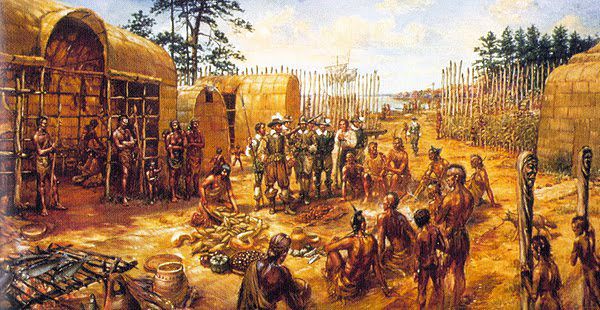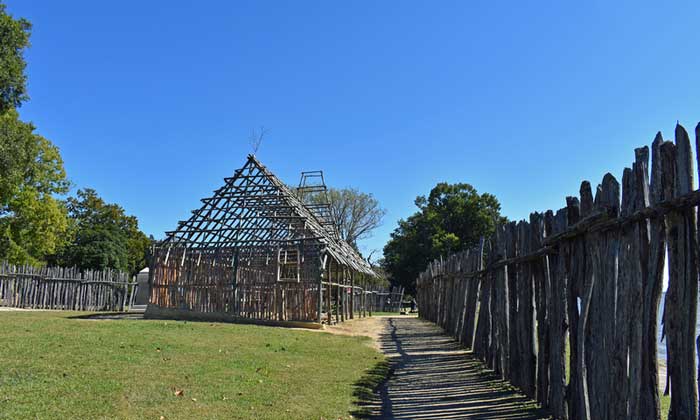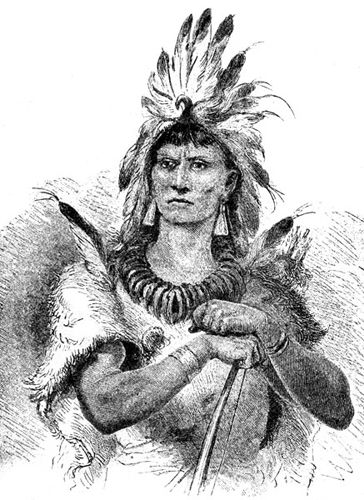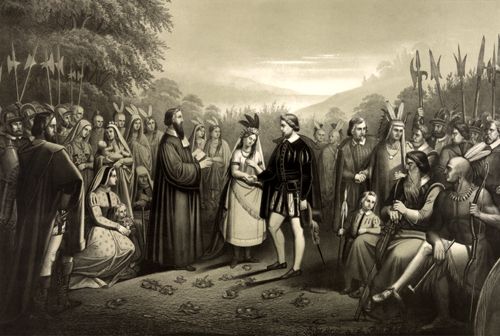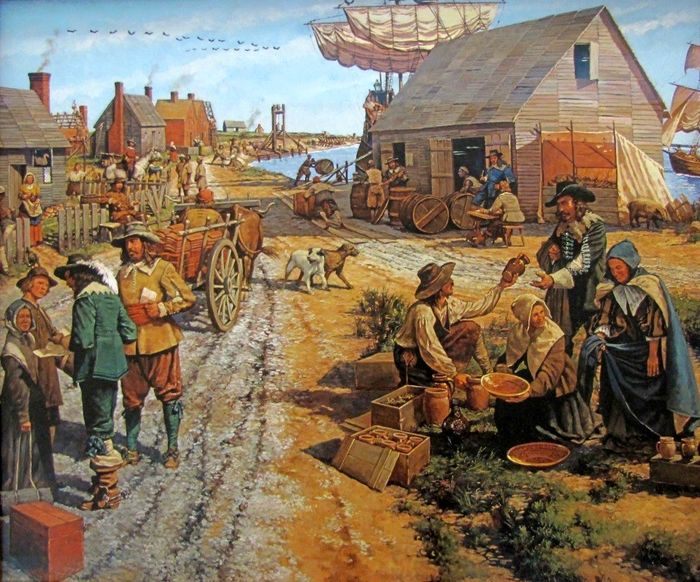The Indians living in the area where Jamestown, Virginia was settled must have had mixed feelings about the arrival of the English in 1607. One of their first reactions was hostility based on their previous experience with Spanish explorers along their coastline. They attacked one of the ships before the English actually landed. Yet the Indians soon began to offer food and traditional Indian hospitality to the newcomers. At first, Powhatan, leader of a confederation of tribes around the Chesapeake Bay, hoped to absorb the newcomers through hospitality and his offerings of food. As the colonists searched for instant wealth, they neglected to plant corn and do other work necessary to make their colony self-sufficient. Therefore, grew more and more dependent on the Indians for food.
As the colony’s fortunes deteriorated during its first two years, Captain John Smith’s leadership saved the colony. Part of this leadership involved exploring the area and establishing trade with local Indians. Unfortunately for the Indians, Smith believed that the English should treat Indians as the Spanish had: to compel them to “drudgery, work, and slavery,” so English colonists could live “like Soldiers upon the fruit of their labor.” Thus, when his negotiations with Indians for food occasionally failed, Smith took what he wanted by force.
By 1609, Chief Powhatan realized that the English intended to stay. Moreover, he was disappointed that the English did not return his hospitality nor would they marry Indian women (an affront from the Native perspective). He knew that the English “invade my people, possess my country.” Indians thus began attacking settlers, killing their livestock, and burning such crops as they planted. All the while, Powhatan claimed he simply could not control the young men who were committing these acts without his knowledge or permission. Keep in mind, however, that Powhatan’s reactions and statements were reported by John Smith, hardly an unbiased observer.
In the next decade, the colonists conducted search-and-destroy raids on Indian settlements. They burned Indian villages and their corn crops (ironic, in that the English were often starving). Both sides committed atrocities against the other. Powhatan was finally forced into a truce of sorts. Colonists captured Powhatan’s favorite daughter, Pocahontas, who soon married John Rolfe. Their marriage did help relations between Indians and colonists.
With the reorganization of the colony under Sir Edwin Sandys, liberal land policies led to the dispersion of English settlements along the James River. Increasing cultivation of tobacco required more land (since tobacco wore out the soil in three or four years) and clearing forest areas to make land fit for planting. Expanding English settlements meant more encroachment on Indian lands and somewhat greater contact with Indians. It also left settlers more vulnerable to Indian attack. By this time, the Indians fully realized what continued English presence in Virginia meant–more plantations, the felling of more forests, the killing of more game–in sum, a greater threat to their way of life. The self-proclaimed humanitarian efforts of people like George Thorpe — who sought to convert Indian children to Christianity through education — did not help either. Finally, the deaths of Powhatan and Pocahontas further hastened hostilities.
The Indians, led by Powhatan’s brother Opechancanough, bided their time. Pretending friendship, they were waiting for an opportunity to strike the English and dislodge them from Virginia. In early 1622, they struck. In all, nearly 350 colonists were killed; Jamestown itself was saved only by the warning of an Indian Christian convert. One result was an ever-hardening English attitude toward the Indians. Another was bloody reprisals against local Indians.
Compiled by Kathy Alexander, updated November 2023.
Also See:
Chief Powhatan of the Powhatan Tribe
The Old Dominion – Settling Virginia
Pocahontas – Legendary Indian Princess
Source: Library of Congress

